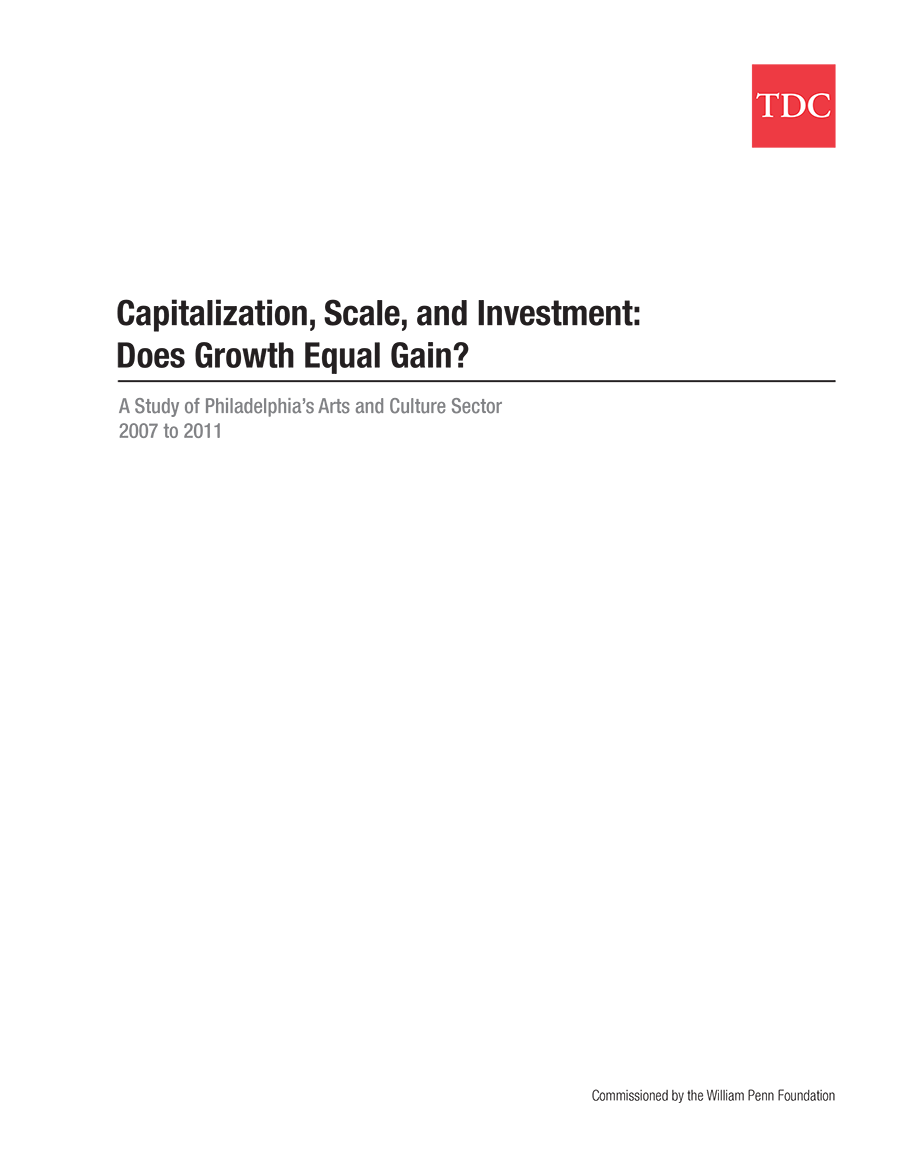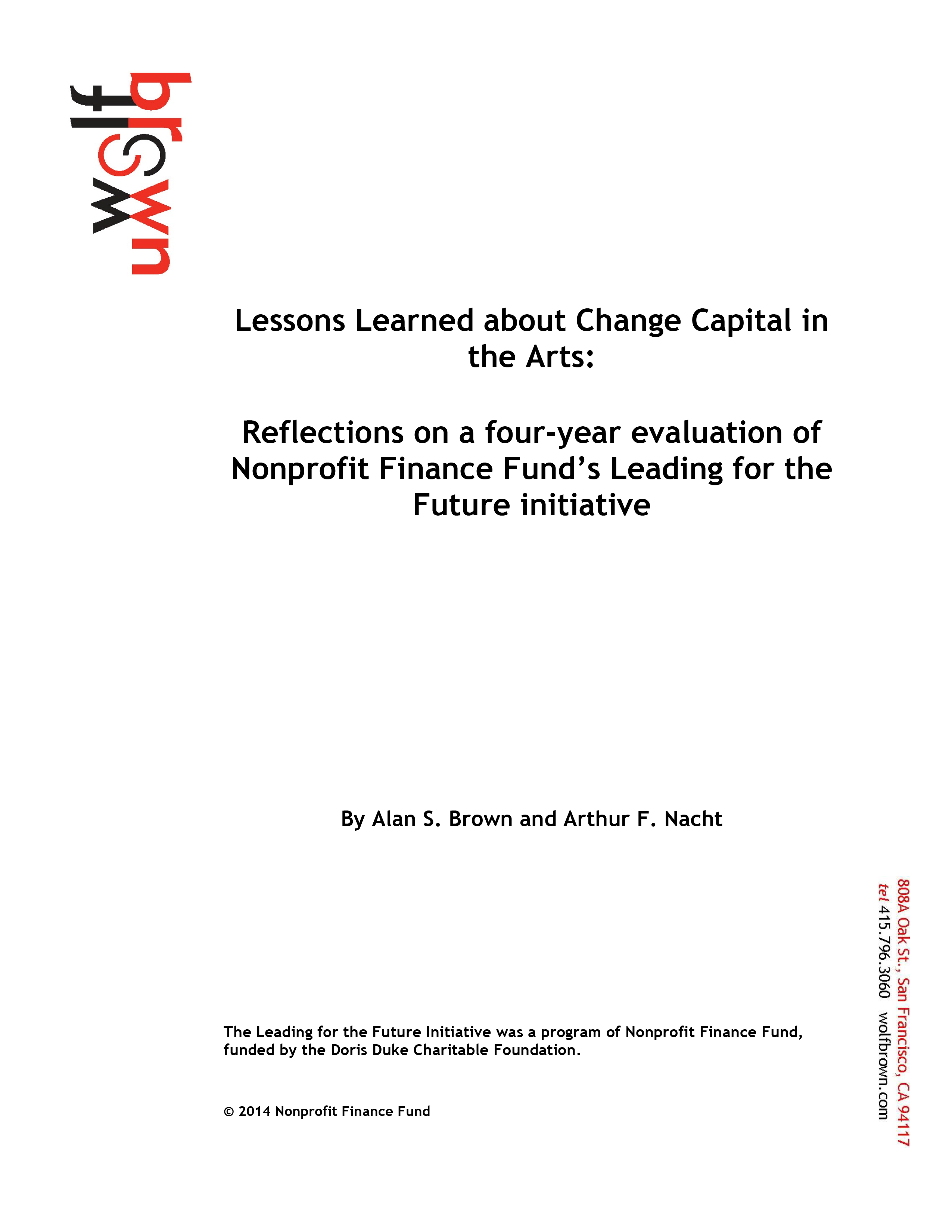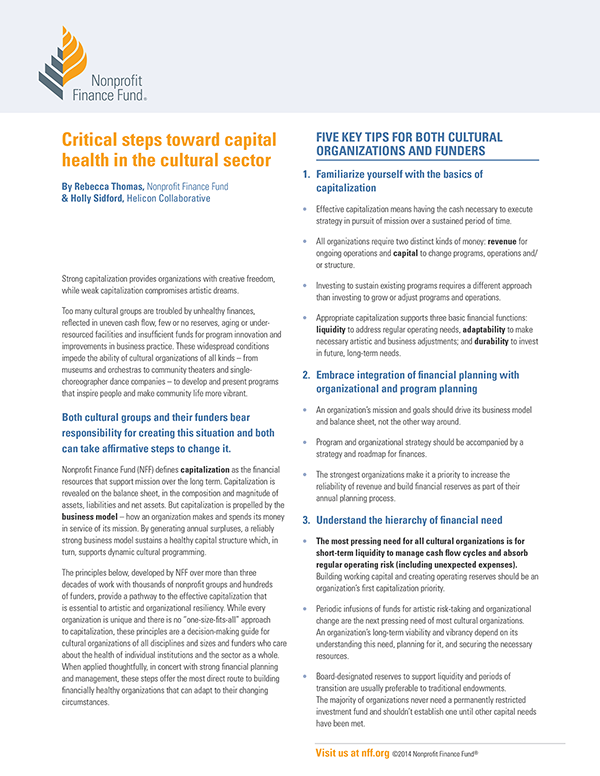The inception of the National Capitalization Project was the release of the Capitalization Literature Review and the National Capitalization summary in 2010.
Capitalization
Grantmakers in the Arts defines capitalization as “the accumulation of the resources an organization needs to fulfill its mission over time,” specifically with regard to financial health. In response to the observation that it has been the norm for the nonprofit arts sector to be poorly capitalized, an issue which disproportionately affects ALAANA organizations, GIA embarked on the National Capitalization Project (NCP) in 2010. Since its launch, GIA has provided resources, conferences sessions, publications, and workshops on nonprofit capitalization. GIA’s Conversations on Capitalization and Community are specialized workshops, held separately for funders and nonprofit grantees, focusing on what each group can do to support the financial health of nonprofit arts and culture organizations. These workshops are available upon request.
![]() Progress Report on GIA’s National Capitalization Project (.pdf, 316 Kb) (2014).
Progress Report on GIA’s National Capitalization Project (.pdf, 316 Kb) (2014).
![]() Critical Steps Toward Capital Health in the Cultural Sector (.pdf, 61 Kb) (2014).
Critical Steps Toward Capital Health in the Cultural Sector (.pdf, 61 Kb) (2014).
A Capitalization tip-sheet authored by Rebecca Thomas, Nonprofit Finance Fund, and Holly Sidford, Helicon Collaborative.
February 2015, 31 pages. TDC, 31 Milk Street, Suite 310, Boston, Massachusetts, 02109. (617) 728-9151, www.tdcorp.org.
Download:
Read More...December 2014, 14 pages. Nonprofit Finance Fund, 70 West 36th Street, 11th Floor, New York, NY 10018. (212) 868-6710. http://nonprofitfinancefund.org/
Download:
Read More...Download:
![]() Critical Steps Toward Capital Health in the Cultural Sector (61 Kb)
Critical Steps Toward Capital Health in the Cultural Sector (61 Kb)
Introduction
Read More...Download:
![]() Critical Steps Toward Capital Health in the Cultural Sector (61 Kb)
Critical Steps Toward Capital Health in the Cultural Sector (61 Kb)
In 2010, Grantmakers in the Arts put capitalization on the national arts agenda by starting a conversation about what funders can do differently to address the chronic financial weakness undermining the vitality of the sector.
Read More...Download:
![]() Building a Resilient Sector (9.2Mb)
Building a Resilient Sector (9.2Mb)



